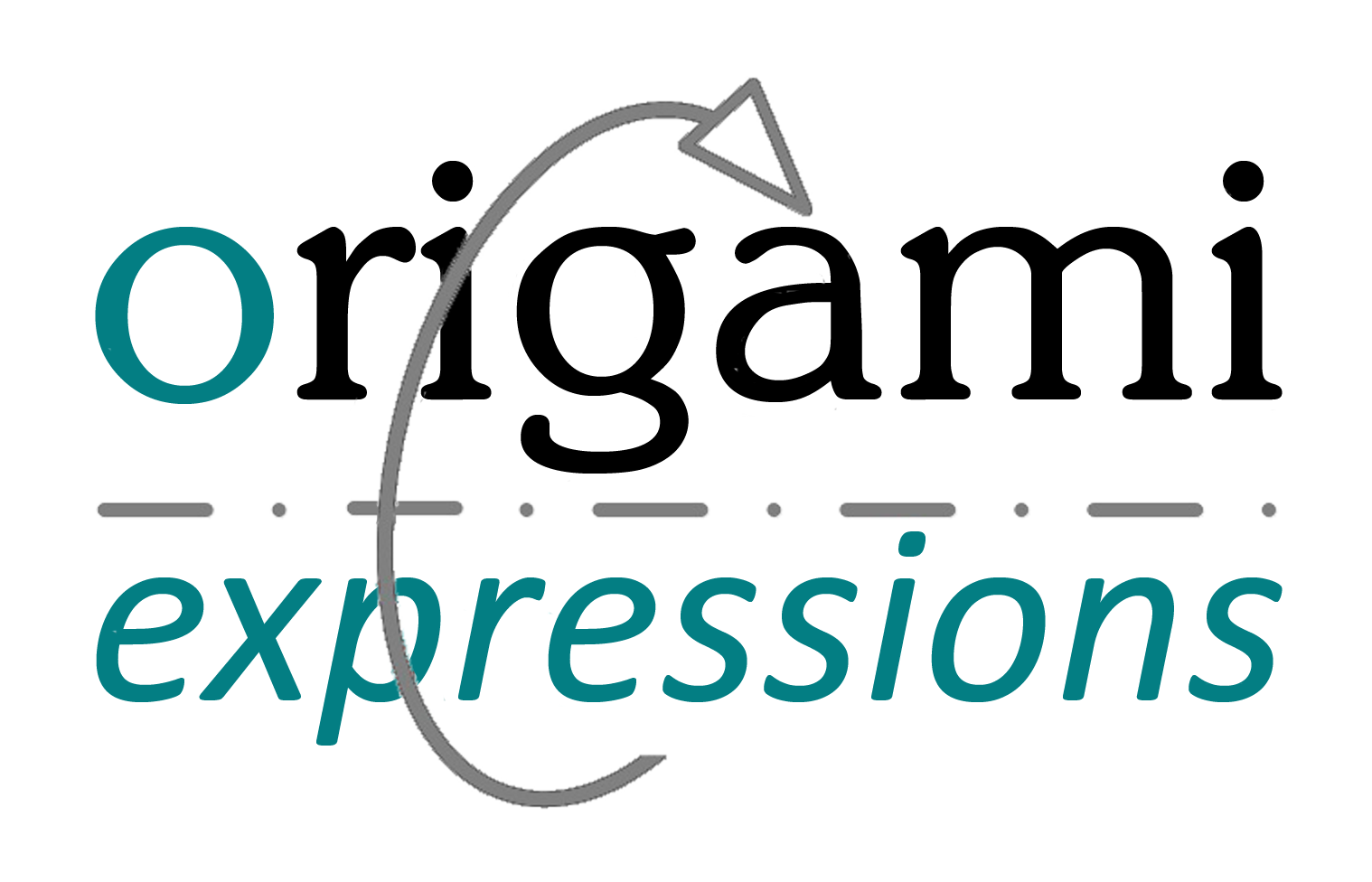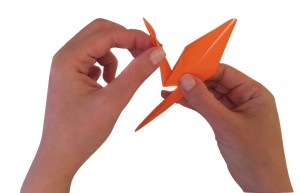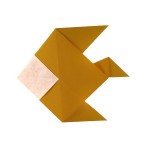What is this life if, full of care,
We have no time to stand and stare.
No time to stand beneath the boughs
And stare as long as sheep or cows.
No time to see, when woods we pass,
Where squirrels hide their nuts in grass.
No time to see, in broad daylight,
Streams full of stars, like skies at night.
No time to turn at Beauty’s glance,
And watch her feet, how they can dance.
No time to wait till her mouth can
Enrich that smile her eyes began.
A poor life this if, full of care,
We have no time to stand and stare.
William Henry Davies
Today’s post is a bit different. Instead of a model review or a set of instructions, this is the first of a series exploring the benefits of origami. I will be doing more on this subject every now and again over the coming weeks. Let me start with a disclaimer: I’m not a therapist or a qualified behaviour expert. I do spend quite a lot of time folding stuff up, and (like most people) I have a brain I use to think with. What follows is based on my own personal experience and limited research.
I first came across mindfulness as a way of increasing my own self-awareness and it’s something I try to practice on a daily basis. It wasn’t until later that I realised that the origami I had been doing for years naturally lent itself to mindfulness.
What is Mindfulness?
Mindfulness is described as taking the time out to be aware of what we are doing ‘in the moment’, without judgment or expectation. Too often we all rush through our days on autopilot, or focusing on getting this task done so we can move onto the next one. There’s nothing intrinsically wrong with that and we all need a sense of urgency in our lives, but it is important not to live every minute of the day in that way.
Mindfulness is a way in which we as people can disconnect from our busy lives when we spend so much time doing something to achieve a particular purpose and just take the time to be aware of what it is we are doing, and ourselves in the act of doing it. It is about being mindful of yourself, your surroundings and your feelings and senses in the moment, to accept them, and move on.
One way of doing this is through meditation, however not everyone enjoys this or finds this easy, so an alternative is to do something simple and relaxation that promotes reflection. Sales of adult colouring books have grown over the last couple of years with this in mind. Taking the time to engage in the simple act of colouring in a picture provides the space to be mindful and self-aware.
Origami and Mindfulness
Origami is being hailed as The Next Big Thing in mindfulness and an alternative to the colouring books. Taking the time to perform each fold in an origami model carefully and precisely produces the best results in the end. The mind of the person folding the model will be ‘in the moment’ as they focus on each step in turn.
I had a conversation with somebody else who folds origami models a few years ago and they said that they get impatient when they fold a new design that starts with one of the classic bases. He had folded so many bird bases that he wasn’t interested in folding another one, he just wanted to rush through those steps as fast as possible to get to the ‘good stuff’ further on.
This is the complete opposite to both mindfulness in origami – and my own personal approach to paperfolding! I think part of the joy of origami is in the methodical approach it needs. Each step is built upon the ones that go before it. Every piece of paper will feel subtly different or respond in a slightly different way when folded. Taking time over each step gives you the chance to enjoy that, as well as the best chance of folding a model that you will be happy about in the end.
How to practice Mindfulness in Origami
Practicing Mindfulness in origami is not about folding differently or learning other techniques. The art of mindful origami is about how you approach the process of folding, how you go about each step, making sure you are aware of your own senses and feelings as you do it, and being – well, mindful really – which is kind of the point of Mindfulness!
Here are some things to think about that will help you be more mindful in origami:
- Focus on the step you’re doing
Sometimes it’s fun to look ahead in the instructions and find out whether the flap you are folding will become a leg, a wing or a tail. Sometimes it’s just as much fun to just fold each step and let the model emerge as you go along. Whichever you choose to do, try to keep yourself focused ‘in the moment’ – on the step you are doing. This will reduce the chance of mistakes and promote a methodical, patient approach. It will also avoid a sense of disappointment when you see a step that says something like ‘repeat the last eight steps on the other eleven flaps’. - Slow down!
There can be an almost subconscious tendency to fold quickly, particularly if you are folding something for the first time and you are impatient to get to the interesting bit, or if the step you are doing is hard and several parts of the paper are supposed to move in different directions at the same time but don’t seem to want to go. Don’t be tempted to rush the folding – you are unlikely to be happy with the result. Make a conscious decision to slow down, be methodical, and fold every step at the same pace. You will fold more accurately, which will make the following steps easier, and the final model will look much neater and more precise. - Enjoy the paper.
As you fold each step, be aware of the paper: the way it feels to the touch, the rustling sound it makes when you fold it. Notice how the paper behaves when you fold it. Does it hold a crease well? Have those two creases really formed that nice clean point you were expecting or has the very end folded back in on itself? No two pieces of paper are ever exactly the same – even mass-produced, machine-made stuff like printer paper or ordinary origami paper will differ very slightly. Maybe that’s a slightly lighter shade of blue than the last sheet you folded, or maybe the air where you are is slightly more humid than it was yesterday and this paper isn’t quite a square as a result. This is particularly true of hand-made papers with long fibres. These can vary in thickness quite dramatically. - Don’t judge.

Yes you will generally get a better finished model from folding accurately as you go along, but every model will always come out slightly different so don’t worry if it’s not perfect. As you fold through multiple layers of paper in the later steps of a model, you can end up with ‘paper creep’ anyway and you can make a fair amount of adjustments along the way.
- Know when to walk away….
No matter how much you tell yourself not to judge your efforts, to slow down and fold carefully, there will be times that it just doesn’t work. Maybe you feel like you just can’t get that fold just the way you want it, or you can’t understand that step even though you’ve tried it fifteen times, you’ve had one too many coffees and your hands are shaking. Maybe folding simply doesn’t feel right today. Maybe you are just tired. If that’s how you feel, then put it down. Don’t judge yourself, the instructions, the model or the designer. Just acknowledge that it isn’t working for you today and put it to one side. It took me several attempts to fold a couple of the steps in Roman Diaz’s Hippocampus and even more to finish it to a standard I was happy with. As I write this I have several half-finished complex models on the go that I will come back to at some point. Nobody said they had to be completed in one sitting. - ….but know when to come back!
When you come back to an origami model and finish something that wasn’t working for you a few days ago you feel so much better. If you still can’t make it work, either fold something else, or put it to one side again.
Good Models to fold while being Mindful
There is no real answer to this, it basically comes down to what you like folding. Some people find that modular origami is particularly good for Mindfulness. The repetitive process of folding the same module over and over again and then assembling the final design helps develop a methodical approach.
Personally, I prefer creative, representational origami. I recommend that people who are just starting to explore origami as a Mindfulness tool should begin with traditional origami designs as these tend to be easy to fold. Clicking the link below will bring up some of the traditional designs on this site which have diagrams explaining how to fold them.
Traditional designs on this website, with instructions
More information on Mindfulness
If you want to learn more about mindfulness, I have listed a few articles to read below
What is mindfulness and how can mindfulness help me?
Mindfulness: Finding Peace in a Frantic World
Resources available to download at The Free Mindfulness Project
Information on origami and Mindfulness:
An article in the Daily Telegraph, UK newspaper on origami and Mindfulness
Article at Body & Soul on why origami and Mindfulness in 2016
28 cranes later: origami and the art of Mindfulness
Get Involved
I’d love to hear your views on the benefits of origami and mindfulness. Feel free to let me know what you think in the comments below, or you find can me on Instagram or Twitter. Check out my Pinterest boards too!
Sign up for my origami newsletter here and get our free Origami eBook.








Your thoughts on Mindfulness were very well said. It helps me understand the fascination with origami.
I practice it in several different ways: daily when playing tai chi which involves letting your breathing be your guide in speed, focusing on the move you are doing and not the next, and practicing no end to be able to be better and netter yet never being perfect.
I use pulling weeds to vacated all bothersome thoughts from my mind and concentrating on seeing only one specific weed. After a while my mind is so bored that creative thoughts evolve and problems become more defined and solutions appear.
Most recently, when having cervical traction, I focus on deep abdominal breathing. It’s very relaxing and refreshing.
I am looking forward your next post along these lines.
Hi Ruth,
Thanks for reading and commenting on my post. I’m glad you liked it. I can imagine that gardening does achieve much the same result, although I’ve never really been that good at it – frankly I could kill a brick! I’ve heard good reports about the benefits of Tai chi although I’ve never tried it. The controlled breathing side of things fits very well with a meditative and mindful approach.
I’ll be doing some more posts along similar themes in the future – watch this space!
A very belated thank you for the comment you left on my blog regarding the origami OCD vs working meditation post several months ago. WordPress being a new platform for me I didn’t realize that several comments had escaped my observation until just this morning. I appreciate you sharing the link to this post and agree, they complement each other well! I’m looking forward to exploring more of your blog now that I know about it 🙂
Hi Stacie! Thanks for the comment. Glad you liked it. Oh, and I love your tiny cranes!
Thank you for this blog. Working on mindfulness is one of the reasons I have started learning Origami – and of course learning to fold lovely designs. The concentration required to do each fold really helps me focus on other things in my life too.
Thanks for commenting. I’m glad you found it useful. Origami has been a big help to my mindfulness practice – I hope it works for you too. I think it’s also good for professional development, more on that in a forthcoming post!
Good luck with both your origami and your mindfulness.